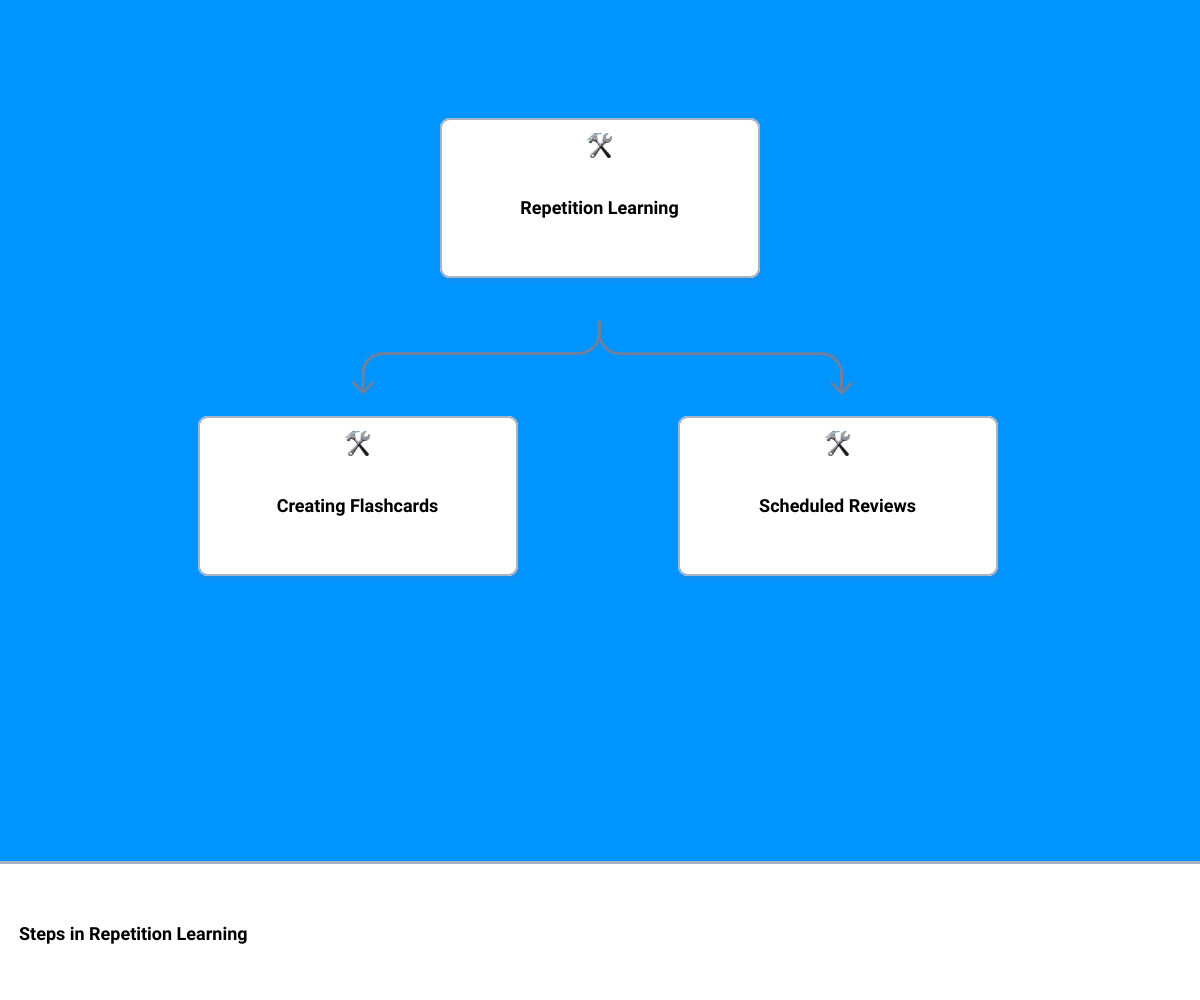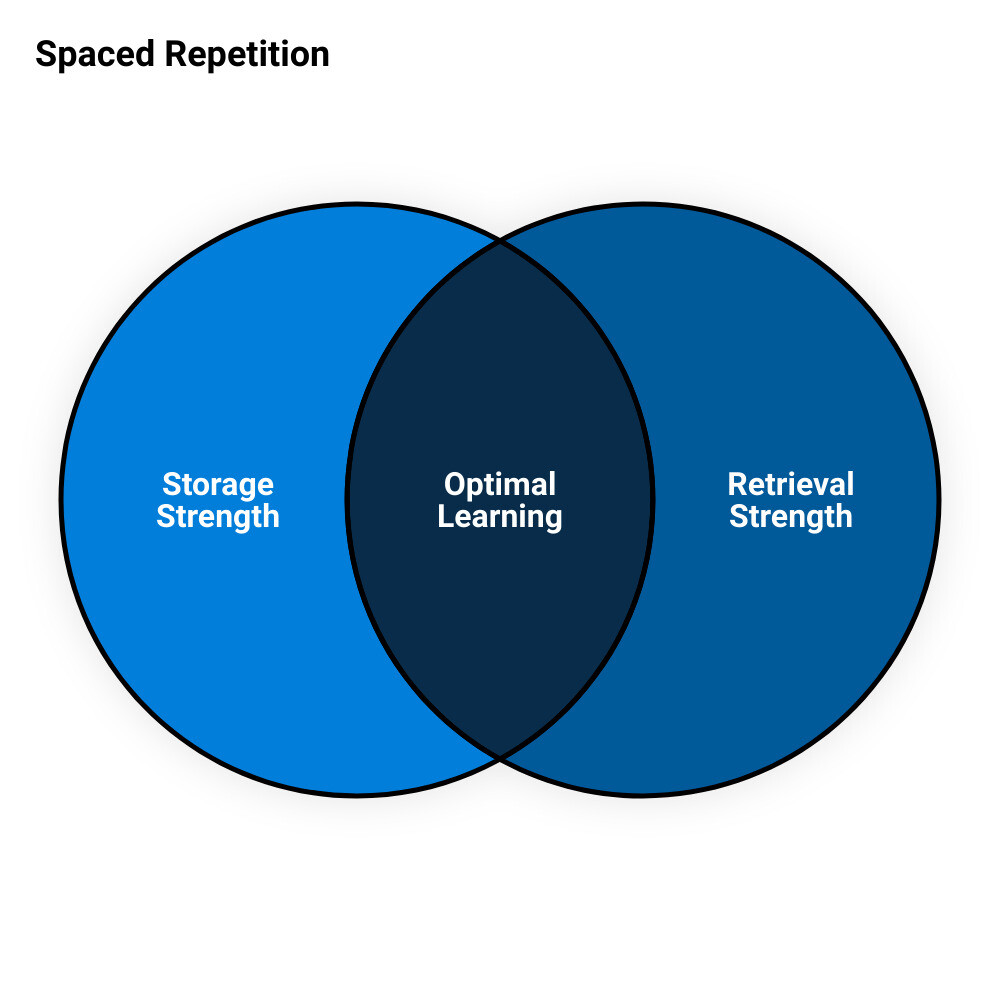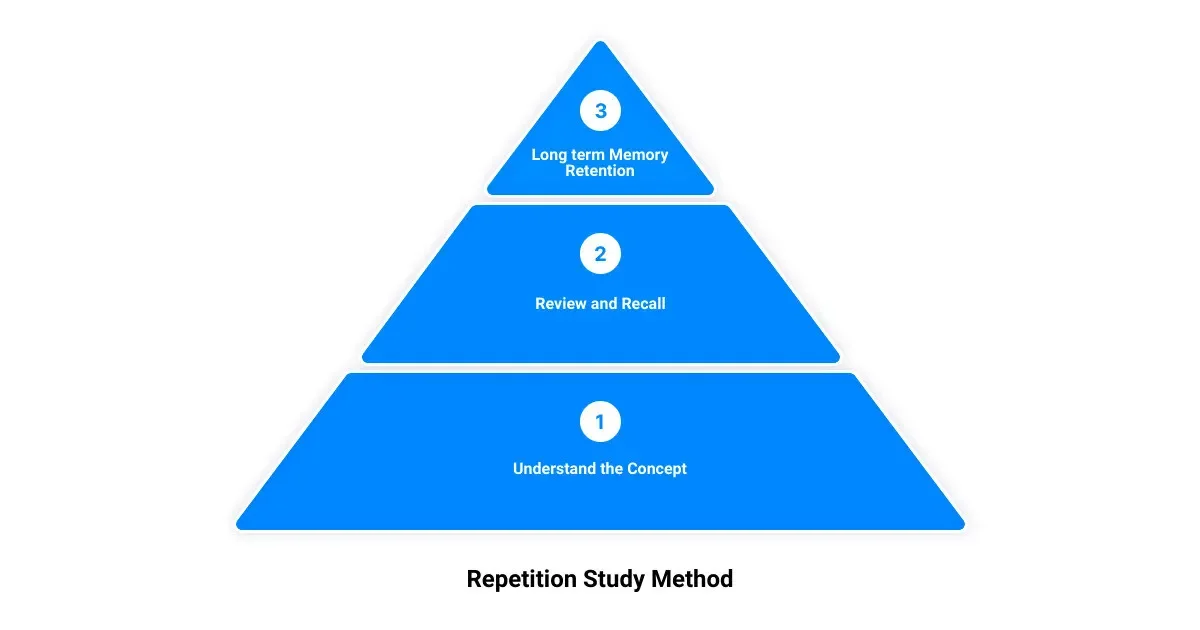The Power of Repetition in Learning
A well-kept secret to mastering any skill or subject lies in a process we all know but often underestimate: repetition. As a lifelong learner on a quest to conquer Mandarin, including the complexities of Chinese characters, you need to harness the power of the repetition study method. This approach is not just a tried and tested route to success, but one grounded in cognitive science, making it a potent tool for efficient learning and long-term memory retention.
The repetition study method is more than just rote learning. It's about strategically revisiting and reviewing information at specific intervals, a process known as spaced repetition. It leverages the spacing effect phenomenon in our brains, transforming passive recognition into active recall. This technique not only ensures that you remember the information but also enhances your ability to retrieve it when needed.
But how does this repetition study method work, and why is it so effective? What does the science say about repetition and memory retention? And importantly, how can you practically implement this method in your Mandarin learning journey?
Join us as we delve into these questions and reveal how you can turbocharge your memory and master your learning with the repetition study method. This journey will transform your understanding of learning, equipping you with the knowledge to unlock your ultimate Chinese mastery.
Understanding the Repetition Study Method
The Science Behind Repetition and Memory Retention
Unleash the power of your brain with the repetition study method. Rooted in cognitive science, this method utilizes the way our brain forms new pathways when a task is repeated often, optimizing the performance of the skill. It's like building a brick wall; if you stack the bricks too quickly without allowing the mortar to solidify, you'll end up with a weak structure. In the same way, spacing out your learning sessions allows your mental mortar, or memory, to solidify, hence improving retention.
The benefits of the repetition study method are not just theoretical. They have been explored and confirmed in the late 1880s by psychologist Hermann Ebbinghaus. Through a series of memory experiments, Ebbinghaus demonstrated that memories decay over time, but with spaced repetitions, this rate of decay could be significantly reduced.
Active Recall vs Passive Review: The Key to Effective Learning
To make the most of the repetition study method, it's essential to engage in active recall rather than passive review. Active recall means forcing your brain to remember the right answer rather than passively absorbing information. Think of it as the difference between working out at the gym and watching someone else do it. In the first scenario, your muscles (or in this case, your brain) are engaged and grow stronger. In the second, you're a mere observer.
Active recall is already at play when you study with flashcards, take a closed-book quiz, or even when you stare off into the air while thinking “what was that thing again…?” This active engagement strengthens the connections in your brain and makes you more likely to remember the information in the long term.
The Forgetting Curve and How Repetition Fights Against It
One of the key principles behind the repetition study method is understanding and counteracting the forgetting curve. Coined by Ebbinghaus, the forgetting curve describes how our memories fade over time if there's no attempt to retain them. The curve starts steep, indicating rapid memory loss, but gradually levels off as time progresses.
But here's the good news: the forgetting curve can be 'reset' with timely reviews. Each time you recall a piece of information, the curve resets, and the rate of forgetting slows down. The repetition study method leverages this principle by introducing calculated intervals of repetition. This process strengthens the memory, thus increasing the time it takes for the information to fade, and helps you to effectively combat your brain’s forgetting curve.
By understanding and implementing the repetition study method, you can turbocharge your memory, optimize your learning, and finally, master Mandarin or any other subject you are passionate about.

Implementing the Repetition Study Method: Practical Steps
Unleash the magic of your mind's memory! Implementing the repetition study method is a practically straightforward process that involves creating effective flashcards, testing yourself, and scheduling your reviews at regular intervals. These steps, backed by cognitive science, work in sync to help you master any complex subject, such as Mandarin.
Creating Effective Flashcards for Repetition Learning
Flashcards, either classic or digital, are the engine that drives efficient repetition learning. The process is simple yet strategic. Begin by collecting your study material from textbooks, lecture notes, or any other relevant information source. Instead of merely jotting down notes, transform that information into question-and-answer flashcards. The question acts as a 'cue,' and the answer represents the solution.
The trick is to use flashcards as a repetition strategy. Their structure, with a 'cue' on the front and an 'answer' on the back, engages you in "active recall". This means you're creating connections with your memory, rather than passively reading information.
Testing Yourself: The Role of Active Recall in Repetition Learning
After creating a few flashcards, review them. This initiates the active recall process, strengthening your memory connections. The act of self-testing is crucial in repetition learning. It's found that students who use this method are more successful in retaining information, as evidenced by the 2008 study conducted by Jeffrey Karpicke and Henry Roediger III.
Active recall involves making an effort to remember the information without looking at the answer first. This simple act of forcing your brain to retrieve the information strengthens your memory and increases retention.
Scheduling Your Reviews: The Importance of Regular Intervals
The 'spaced' in spaced repetition is all about timing. It refers to the gaps of time in between your study sessions. The right timing of these intervals is crucial in resetting the forgetting curve and enhancing long-term memory retention.
When you schedule your reviews, aim to do it just when you're on the verge of forgetting the information. This could mean reviewing information right after school, and then actively recalling the information in a few hours, a few days, then a few weeks later.
Remember, repetition learning is not about cramming sessions back-to-back but about spacing out your study sessions for maximum learning and memory. The intervals depend on factors like the complexity of the information, your personal learning pace, and upcoming exam dates.
By following these practical steps in implementing the repetition study method, you're well on your way to mastering your learning effectively and efficiently.

Spaced Repetition: A Deeper Dive into the Repetition Study Method
Buckle your mental seatbelts as we plunge deeper into the fascinating world of the repetition study method. We'll explore the cognitive science principles that underpin this method, helping you understand why it's such a potent tool for mastering any subject, including Mandarin.
The Spacing Effect: Why Our Brains Learn Better Over Time
The spacing effect is a cornerstone of spaced repetition. This memory phenomenon suggests that our brains absorb information more effectively when we spread our study sessions over time, rather than trying to cram everything in one go.
Think of learning as constructing a brick wall. If you pile up the bricks without allowing the mortar to solidify, you'll have a shaky structure. Similarly, allowing time between your learning sessions lets your mental 'mortar', or memory, solidify, leading to more robust retention.
Storage Strength vs Retrieval Strength: Understanding Memory Strengths
Delving further into the mechanics of memory, we come across two distinct strengths: storage strength and retrieval strength. Storage strength refers to the stability of a memory in our brain. Once a piece of information has been deemed important enough to store, it stays put. Retrieval strength, however, concerns our ability to access this stored memory. Unlike storage strength, retrieval strength can fade over time, necessitating regular maintenance.
So, when we talk about 'forgetting' something, it's more about accessibility than loss. The memory still exists in storage, but we may struggle to find it. This underscores the importance of regular review and retrieval in maintaining our ability to recall critical information.
The "Forget to Learn" Theory: The Role of Forgetting in Learning
Interestingly, the process of forgetting can actually enhance your learning. This concept, known as the "Forget to Learn" theory, proposes that learning increases when we access a memory again after retrieval strength has dropped. The challenge of recalling information strengthens the memory, making it easier to retrieve in the future.
Maximizing Desirable Difficulty for Optimal Learning
This brings us to the principle of desirable difficulty. It suggests that learning is most effective when it's challenging but within reach. Spaced repetition, with its gradually increasing review intervals, provides just the right balance of difficulty to keep our brains engaged and our learning optimized.
In conclusion, understanding these principles equips you with the knowledge to leverage the repetition study method effectively. Whether you're mastering Chinese characters or any other subject, spaced repetition is your secret weapon to turbocharge your memory and learning.
Tools and Techniques for Implementing Spaced Repetition
After diving into the theory and principles of spaced repetition, it's time to put this powerful strategy into practice. When it comes to implementing spaced repetition, there are several tools and techniques that stand out for their effectiveness and ease of use.
The Leitner System: A Simple Paper Flashcard Method
The Leitner System is a straightforward approach to spaced repetition that you can implement using simple paper flashcards. This system involves sorting flashcards into different boxes based on how well you know the information. You review the flashcards in each box at different intervals, with cards you know well reviewed less frequently and those you struggle with reviewed more often. This method embodies the fundamental principles of spaced repetition, making it a great starting point for anyone new to the repetition study method.
Anki: A Popular Spaced Repetition App
If you're looking for a digital approach, Anki is a popular spaced repetition software that allows you to create and review flashcards on your computer or mobile device. Anki uses an algorithm to determine the optimal time to review each flashcard, ensuring that you spend your study time efficiently. This app also supports the addition of images and audio to your flashcards, offering the flexibility to customize your learning materials based on the subject matter.
Traverse: A Learning App Combining Mind Mapping, Flashcards, and Note-Taking
For a comprehensive learning solution, Traverse combines the power of mind mapping, flashcards, and note-taking to help you master complex topics like Mandarin. In Traverse, you can create flashcards directly from your notes, ensuring that your study materials are connected to your broader understanding of the topic. This connection helps to transform isolated facts into a cohesive tree of knowledge, enhancing your understanding and retention of the material.
Importing Anki Decks into Traverse for Continued Learning
Already using Anki and want to take advantage of the unique features offered by Traverse? No problem! Traverse enables you to import your Anki decks into the platform, so you can continue your learning journey without starting from scratch. Once your decks are imported, you can start to link your flashcards to your visual map, further integrating your learning.
With these tools and techniques in your learning arsenal, you're well-equipped to take your study sessions to the next level. Whether you're learning Mandarin or mastering another complex subject, implementing spaced repetition can turbocharge your memory and enhance your learning efficiency.

The Impact of Spaced Repetition on Different Fields of Learning
Harnessing the power of spaced repetition isn't limited to mastering Mandarin or any single field. This transformative study method has proven its mettle across a myriad of learning domains. From language acquisition to problem-solving in mathematics and even memory rehabilitation, let's delve into the various realms where this science-backed technique reigns supreme.
Language Learning: The Effectiveness of Spaced Repetition in Vocabulary Acquisition
Mastering a new language can seem like a daunting task, especially when it involves learning thousands of unique characters like in Mandarin. That's where spaced repetition steps in as a real game-changer. Each time you successfully recall a character, the subsequent review is scheduled for an extended interval. This structured approach helps embed each character deeper in your long-term memory, making vocabulary acquisition a breeze. The Traverse platform also uses this methodology, allowing learners to optimize their study schedule for peak performance.
Mathematics: How Spaced Repetition Can Improve Mathematical Skills
Spaced repetition isn't just for memorizing facts; it also shines in domains requiring problem-solving skills, like mathematics. The process of solving mathematical problems involves grasping and remembering various formulas, theorems, and concepts. Enter spaced repetition, the memory-boosting technique that helps learners reinforce this knowledge over time. By reviewing mathematical concepts just before they're about to fade from memory, you not only reset the forgetting curve but also slow down the decay, enabling longer retention of information. This method has been shown to improve scores on final tests, as demonstrated in a study conducted by Pashler, Rohrer, Cepeda, and Carpenter.
Memory Rehabilitation: Using Spaced Repetition in Alzheimer's Disease Treatment
The benefits of spaced repetition extend even to memory rehabilitation. Individuals with memory impairments, such as those suffering from Alzheimer's disease, can find this method immensely helpful. By strategically spacing out study sessions, this method allows them to optimize their memory retention and more efficiently learn new material. It's a testament to the infinite potential of the human brain and the profound impact of spaced repetition on learning and memory.
In conclusion, the impact of spaced repetition on different fields of learning is vast and varied. Whether you're a language learner, a mathematics enthusiast, or someone seeking to improve memory function, the repetition study method can significantly enhance your learning journey.
Conclusion: Master Your Learning with the Repetition Study Method
Lifelong learners like you, who are committed to mastering a new language or any other complex subject, should not underestimate the power of the repetition study method. With its scientifically-backed approach to improving memory retention and knowledge transfer, this method, particularly when combined with active recall and spaced intervals, offers a proven strategy for efficient and effective learning.
The repetition study method works in harmony with the natural rhythms of our brain, leveraging the phenomena of the spacing effect and the forgetting curve to optimize our memory capacity. It's not about rote memorization, but about smart studying. It's about moving beyond passive review and embracing active recall to strengthen and solidify your knowledge.
Whether you use traditional flashcards, leverage the Leitner System, or employ digital tools like Anki or Traverse, the principles of the repetition study method remain the same. Regular review, spaced intervals, and active recall are key to embedding information into your long-term memory and making your learning truly stick.
Moreover, the flexibility of the repetition study method means it can be adapted to fit your unique learning style and goals. You can tweak the intervals, adjust the level of difficulty, and choose the content that most aligns with your learning objectives. Whether you're trying to learn Mandarin or dive deep into quantum physics, repetition learning can be your secret weapon.
In conclusion, the repetition study method is more than just a study technique, it's a tool for lifelong learning. As you continue on your journey to master Mandarin or any other subject, remember that repetition is not tedious or boring, but a powerful ally in your learning journey. Now armed with the knowledge of the repetition study method, you are one step closer to becoming a master of your memory and supercharging your learning.

